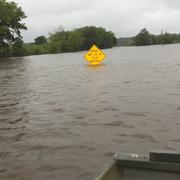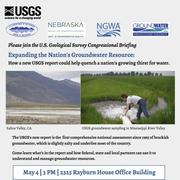Due to a lapse in appropriations, the majority of USGS websites may not be up to date and may not reflect current conditions. Websites displaying real-time data, such as Earthquake and Water and information needed for public health and safety will be updated with limited support. Additionally, USGS will not be able to respond to inquiries until appropriations are enacted. For more information, please see www.doi.gov/shutdown
About
About Carousel - Congressional Briefings
We monitor, assess, and conduct targeted science research
so that policy makers and the public have the understanding they need to enhance preparedness, response, and resilience.
Learn MoreBriefing Series
Our Congressional Briefing Series began in 1999, in order to increase Congressional awareness of the role and relevance of our science in the public policy debate and to ensure that science is at the table when Congress is making decisions. Explore presentations, biographies of speakers, partner and sponsor websites, and other information for each briefing.
Large, damaging earthquakes will happen. The U.S. loses over $6 billion annually from earthquakes, according to FEMA, and about three-quarters of that is in California, Oregon, and Washington. ShakeAlert will be an innovative technology that will make communitie
Speakers will discuss landslide hazards, the science, and emergency management. Learn about real-life situations, including observations from Puerto Rico, and how science helps decision-makers reduce losses and respond to the threat.
The U.S. Geological Survey invites you to join us for a congressional briefing during Bat Week (Oct. 24 – 31). Come hear from farmers, scientists, and land managers working on the front lines about the risks bats face as well as the many ways that bats help to naturally grow the agricultural economy.
Speakers will share stories from Irma, Harvey and other intense storms, during a panel.
Earth science is the foundation of many industries, including the Nation’s most important one—– agriculture. Come learn about the variety of ways in which earth science informs agriculture, and hear from stakeholders who rely on USGS science to make informed decisions in their fields.
The USGS's new report is the first comprehensive national assessment since 1965 of brackish groundwater, which is slightly salty and underlies most of the country. The report provides maps and data that can assist water infrastructure decision makers determine the viability of using this substantial resource for drinking water, irrigation, and mining, among many other uses.
Harmful algal blooms (HABs) have been reported in every State and are increasingly affecting coastal, Great Lakes, and inland communities and economies.
Seven out of ten emerging human diseases originate in wildlife or domestic animals. Scientists are therefore advancing a concept of integrated wildlife, domestic animal, human and environmental health—One Health.
Seven out of ten emerging human diseases originate in wildlife or domestic animals. Scientists are therefore advancing a concept of integrated wildlife, domestic animal, human and environmental health—One Health.
In many places, America’s water resources are being stressed by increasing demand for water, decreasing water supplies, and reduced water quality. Large areas of the country are vulnerable to both droughts and floods. These stresses can be heightened by changes in land use, population growth, and climate change.
Hurricane Sandy in October 2012 devastated some of the most densely populated areas of the Atlantic Coast. The storm claimed lives, altered natural lands and wildlife habitat, and caused millions of dollars in property damage. Hurricane Sandy is a stark reminder of our Nation's need to better protect people and communities from future storms.
Outdated and inconsistent elevation data cost lives and hinder prosperity across our Nation. Current and precise 3D elevation data are essential to help communities cope with natural hazards, support infrastructure, ensure agricultural success, strengthen environmental decision making and bolster national security.









